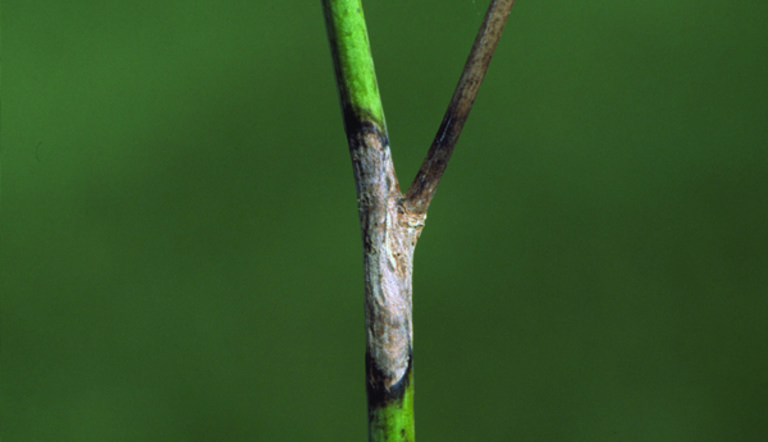
Pest Profile: Sclerotinia Stem Rot
Sclerotinia stem rot, a.k.a white mould, is a notorious yield-grabber, especially for canola crops. The disease overwinters in soil and on crop stubble, and needs warm, moist soil conditions and plenty of shade to germinate. This means that the spread and severity of sclerotinia varies widely from year to year: dry, hot summers keep sclerotinia at bay, while humid, damp summers can lead to high levels of disease pressure.
By causing lesions on stems of infected plants, sclerotinia cuts off water absorption and nutrient uptake, reducing canola seed yield by as much as 50%. Fungicide applications should be completed before sclerotinia is found in the field for best results, but concerned growers should also consider wider row spacing and longer crop rotations to reduce sclerotinia build-up in the soil.
By causing lesions on stems of infected plants, sclerotinia cuts off water absorption and nutrient uptake, reducing canola seed yield by as much as 50%. Fungicide applications should be completed before sclerotinia is found in the field for best results, but concerned growers should also consider wider row spacing and longer crop rotations to reduce sclerotinia build-up in the soil.
Pest Profile
October 11, 2021
6min read

IDENTIFICATION
Sclerotinia stem rot is characterized by bleached stem lesions and hard black bodies (sclerotia) of white mould fungus inside the stems. Infections that start on dead blossoms spread to adjacent tissues, resulting in dead branches or dead plants. The rotted stems usually have a bleached appearance.
CONTROL TIPS
- Use clean, certified seed and crop rotations of at least 4 years. Include non-host crops such as corn, wheat, barley or oats in fields with a history of sclerotinia.
- Row spacing has been shown to influence this disease in susceptible crops like soybeans and canola, with narrow rows resulting in more sclerotinia stem rot. As a preventative measure, consider wider row spacing in fields with a history of this disease.
- Keep fields free of broadleaf weeds since many are alternate hosts for this disease.
REGISTERED FUNGICIDES
Please read each label to determine which fungicide is appropriate for the crop affected.